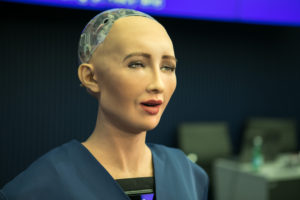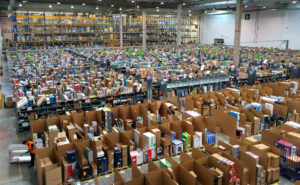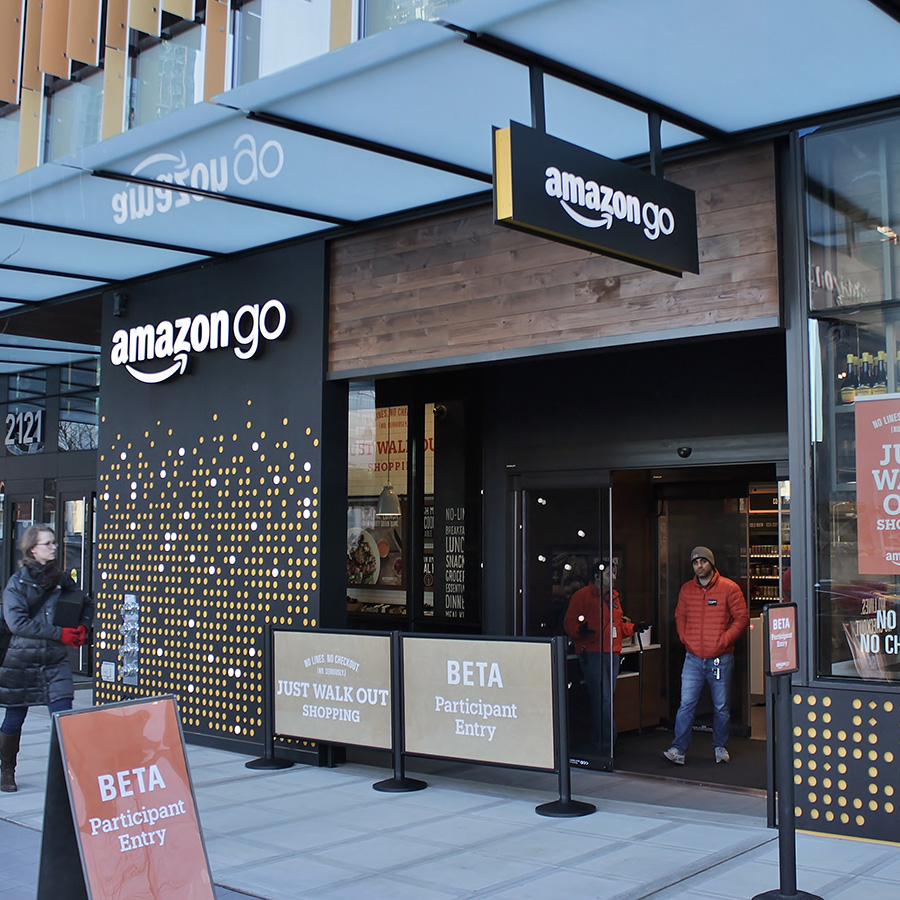An exciting convergence is happening between the physical and digital worlds. Trends from robotics and new materials to logistics and sustainability are impacting our industries and our lives.
In this regard, 2017 didn’t disappoint. SpaceX demonstrated their premise of reusability to make regular access to space economically feasible. Scientists edited the genes of a human embryo using CRISPR-Cas9. MIT researchers created the first superlight porous material from graphene, and the US Navy 3D printed their first component for use inside an aircraft.
Autonomy is finally here–for specialized applications, anyway. Autonomous truck company Embark came out of stealth and started shipping refrigerators regularly from Texas to a distribution center in Southern California. Uber announced flying car service in Los Angeles by 2020, and automotive micro-factory Divergent 3D (listen) raised $90M to use digital fabrication to manufacture small fleets of autonomous vehicles.

Artificial intelligence won big, too. Humanoid robot Sophia was granted citizenship in Saudi Arabia and Google’s Deep Mind AI taught itself to walk last summer. (However, in another study, DeepMind still had difficulties understanding Homer Simpson’s actions. D’OH!)
DAQRI’s lightweight Smart Glasses are ready for prime time, even if MagicLeap isn’t quite ready quite yet. Even Snap Inc–the pioneer of ephemeral, digital interactions–became a hardware company with its Spectacles, drones, and merchandise. (Unfortunately for the company, however, hundreds of thousands of those Spectacles are still sitting as extra inventory in warehouses.)
Despite all of the amazing technological innovations last year, however, the most notable technology news item in 2017 in my opinion wasn’t an innovation at all, but far more prosaic: Amazon’s acquisition of Whole Foods. The deal rocked the business community for many reasons, but mostly for its symbolism. Today’s most important tech trend is Amazon.
Thanks in large part to the tech giant, consumers have radically changed our expectations around cost and convenience, wanting nearly instant access to products as though we were turning on a faucet or flipping a light switch. Companies feel more intense pressure than ever to innovate quickly and accommodate our insatiable need for instant gratification.
To deliver on the promise, Amazon has been pioneering new frontiers of logistics and automation. As of last January, Amazon had 45,000 robots, at an annual growth of 50% over the previous year. This not only means they are implementing automation at a rapid pace, but they are at the forefront of learning how to integrate their workforce with automation. This trend will likely lead to a new discipline of management and organizational behavior.

Meanwhile, many retailers have been struggling to survive what some have called the Great Retail Meltdown of 2017. While others have pointed out this is just a market correction, Amazon’s vast data collection and analytics capabilities not only enable them to deliver convenience, but consumer and pricing intelligence that many claim is used undercut brands and retailers.
Other impacts of Amazon’s wide-ranging business model are less direct but no less subtle: the shift away from traditional brick and mortar and our easy access to digital entertainment is causing consumers to stay home. Developers are rethinking the purpose of shopping malls, the role of theaters, and the retail experience.
Shopping from home and instant delivery also mean that local warehousing space will become more important and new industrialists have reason to reimagine transportation systems. Governments have been clamoring with incentives and grand proposals to become the location for Amazon’s second headquarters. Whether you love them or hate them, Amazon is changing the face of business, society and our cities.

Given these trends, it might seem like a challenging time for new products and retailers to face these trends. But other technology shifts are creating opportunities that might make today one of the best times for starting a new venture.
Technologies like Instagram and direct-to-consumer business models are disintermediating retail, enabling emerging brands to get noticed without the traditional gatekeepers. But it does take effort to keep up. Shrewd founders have been experimenting with branding, pricing, and new online retail models. Some high growth consumer goods like SmartyPants Vitamins have been incredibly successful at leveraging Amazon in the early stages (listen here).
It has become more compelling than ever for entrepreneurs and influencers to create physical products, and founders of tech companies–such as those I’ve interviewed on The Art of Manufacturing podcast like Iconery (jewelry) and Lumi (packaging) and Plethora (machining)–help creatives without prior experience turn their dreams into reality. New platforms make it easier to scale. And Amazon Web Services, ironically, empowers a vast number of new ventures to get off the ground. Just like doorstep delivery, web services have become like a utility, to be turned on and off based on a business’ needs.

Because brand story, innovation, and time to market have become key in this rapidly changing environment, I predict that local manufacturing will play an ever-critical role in 2018 and beyond. The high costs of doing business in cities will be balanced by their access to talent, diverse markets and the cross-pollination of ideas.
One promising winner is Los Angeles. It’s a little known fact that L.A. is already the largest center of manufacturing in the country. Being a center of aerospace, design, transportation, food, fashion, logistics, and Hollywood, the city could be poised to be at the center of this resurgence.
The key for any region to thrive is to build on the innovation advantages of manufacturing locally. We must leverage sustainability to drive down cost, and learn how to train the workforce and blend it with automation. Businesses who either pioneer the technology trends or adapt quickly will be the winners.
And those flying cars might finally become a reality after all.

